Introduction
Want to know how iron castings are made step by step?
Here is a complete guide to explain the production process from preparation to finished product. We hope it will help you better understand the production process of iron castings.
1. Preparation Work
When receiving an order from a customer, the first step is to determine the cast iron material as well as the grade.
As the mechanical properties of iron castings are different in different application scenarios, professional iron casting suppliers can make professional suggestions on materials and grades according to the needs of the customers.
If the customer has a specific designation, the material and grade will be used accordingly.
Once the material and grade are determined, the next step is to define the casting process and structure of the iron casting.

Common casting processes for iron castings include green sand casting, gas casting, resin sand casting, investment casting, lost wax casting, and shell casting.
Among them, green sand casting is the most common, accounting for about 80% of all iron castings.
The structure of iron castings includes single-sided casting, double-sided casting and multi-sided casting.
Single-sided casting, also called single-piece casting, is a casting with only one working surface.
Double-sided casting, also known as two-piece casting, is a casting with two working surfaces.
Multi-face casting refers to a casting with three or more working surfaces.
According to the size, weight, and complexity of the structure of the iron casting to determine which casting process and structure to use.
2. Design Work
After the structure and process of iron casting is decided, the next step is to design the iron casting according to the customer’s requirements.
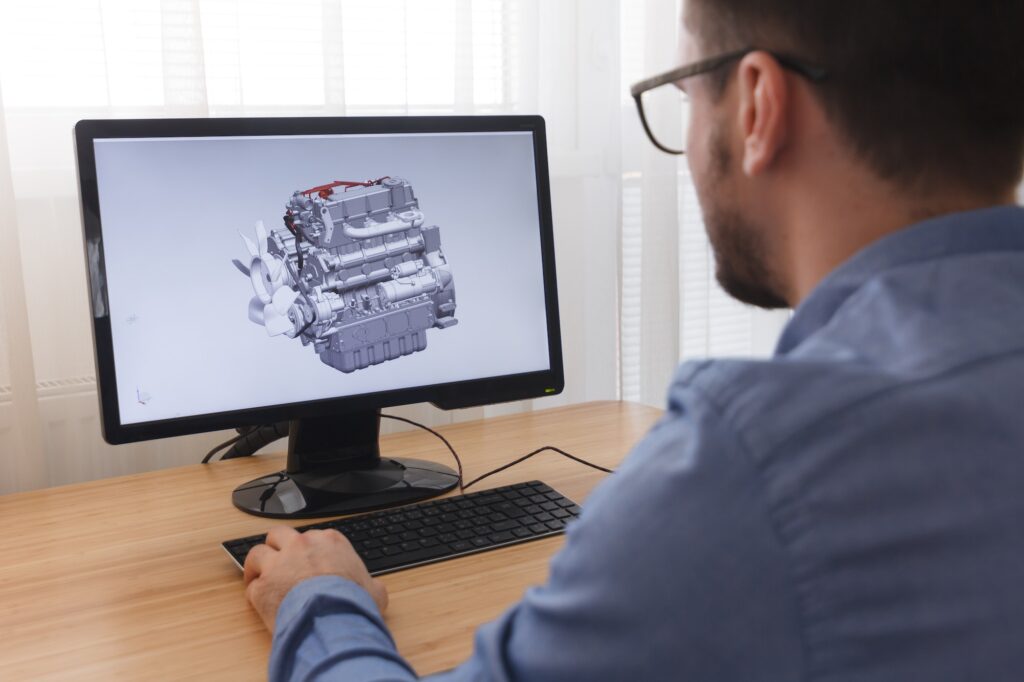
The design of the iron casting includes two aspects: first, the three-dimensional (3D) design of the iron casting itself, and second, the design of the mold.
The 3D design of the iron casting is to determine the size and shape of the iron casting, while the mold design is to determine the shape of the cavity of the iron casting. This includes the location and size of the pouring system.
The pouring system includes risers, pouring cups, water spouts and runners. The main purpose of the pouring system is to form a cavity to be filled with iron and to ensure that the iron can be filled evenly. Do not underestimate the design of the pouring system, it is an important factor in the yield of iron castings.
Castimoo‘s mold design team, led by a university professor in casting, has 30 years of experience in casting and mold design, and can provide you with the most professional mold design solutions.
3.Making The Mold
The mold is the negative cavity of the iron casting and its shape depends on the shape and size of the iron casting.
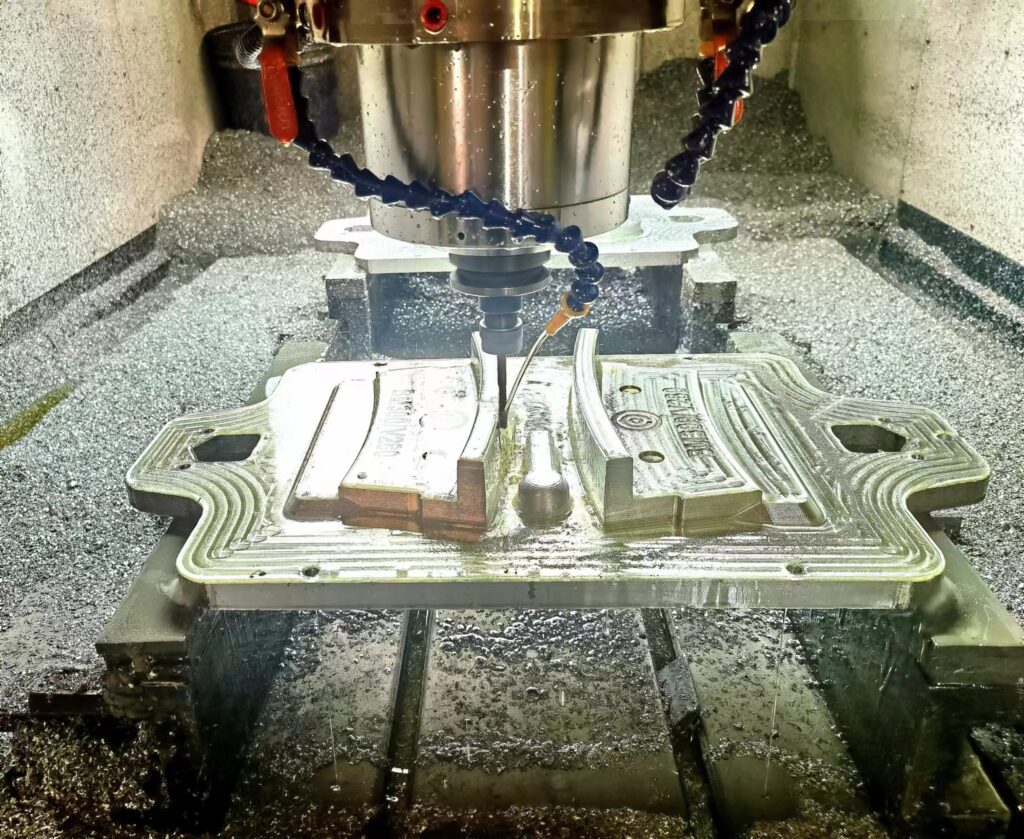
Also according to the different casting methods, the material and size of the mold used are different.
Take for example a bearing housing with a diameter of 100mm, the quantity of this small product is larger and generally comes to be made with an automatic mold making machine to improve production efficiency, the material of the mold is aluminum plate.
The aluminum plate is carved out of the shape of the product on a CNC machine according to a 3D design drawing.
The molds can be made of other materials such as wood, metal or foam.
If the number of products you need is small, making a mold is more costly. At this point it is worthwhile to communicate with your supplier to make iron castings from foam material, which can reduce the purchase cost.
4. Making Sand Mold
The sand mold is generally composed of a box and a movable top plate. The box is the lower part of the sand mold, which is where the molten iron is poured.
The top plate is the upper part of the sand mold, which contains the gate, runner, gate and column.
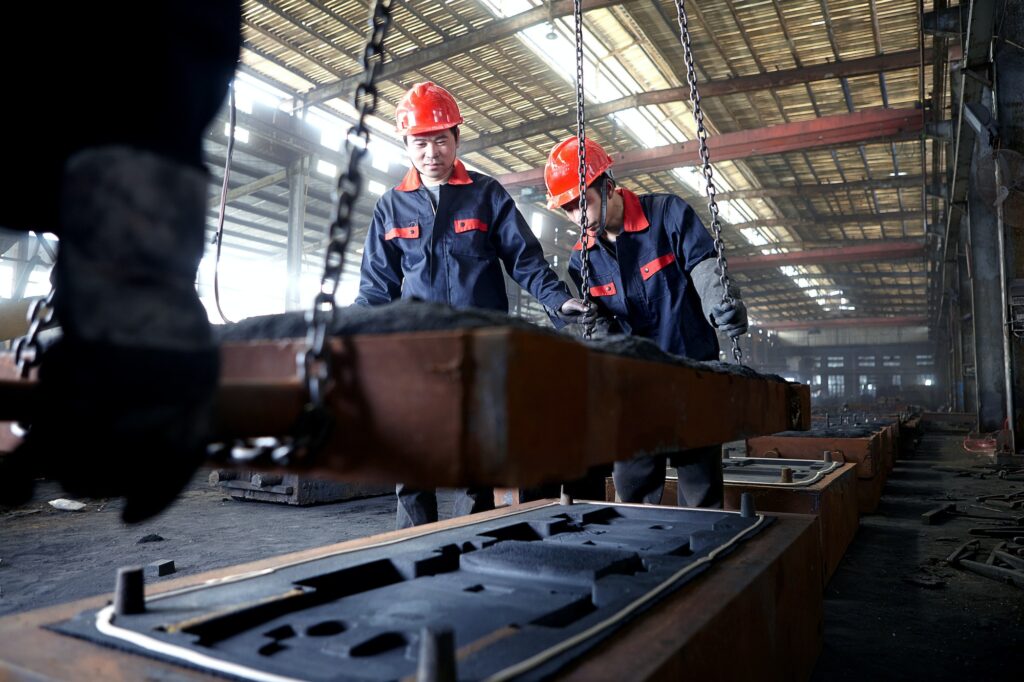
First, the lower part of the sand mold is made. This is accomplished by first making a sand mold of the lower half of the iron casting. The sand mold is made by filling the lower half of the mold box with sand.
Once the sand is packed tightly, the box is moved out of the way and the sand mold is allowed to harden.
As soon as the sand mold hardens, the next step is to create a negative pressure in the sand mold for the lower half of the iron casting.
This is accomplished by using a pattern for the lower half of the iron casting. The pattern is placed on top of the sand mold and then covered with more sand. The entire assembly is then compacted.
The next step is to make the upper part of the mold. The principle is the same as for the lower half.
The last step is to remove the aluminum mold and connect the upper part of the sand mold with the lower part to form a sand mold. And leave the location of the sprue on the surface, the sand mold is made.
5. Pouring Molten Iron
Once the sand mold is completed, it is time to pour the molten iron.
This process starts with melting the iron in a furnace. The molten iron is then poured into the sand mold, filling it completely.
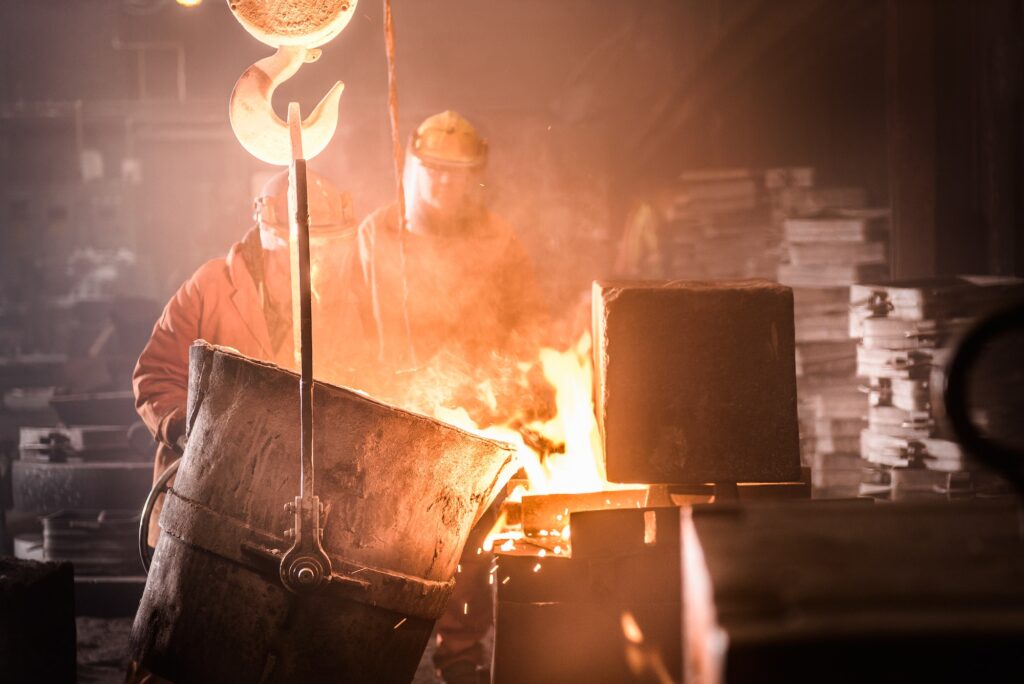
To prevent the high temperature of the molten iron from cracking the sand mold and thus affecting the quality of the casting, it is necessary to put a frame around the sand mold and hold it down with a heavy object at the top.
The next step is to wait for the iron to cool and solidify. This can take several hours or even days, depending on the size and complexity of the casting.
Once the iron has cooled, the sand mold can be opened and the initial blank of the iron casting can be seen.
6. Shot Blasting and Grinding
There are still many burrs on the blanks of iron castings at this point, and if such a blank product is sent to a customer, it will be returned.
After the iron casting has cooled and hardened, it is time to give it a smooth surface. This is done by a process of polishing and grinding.
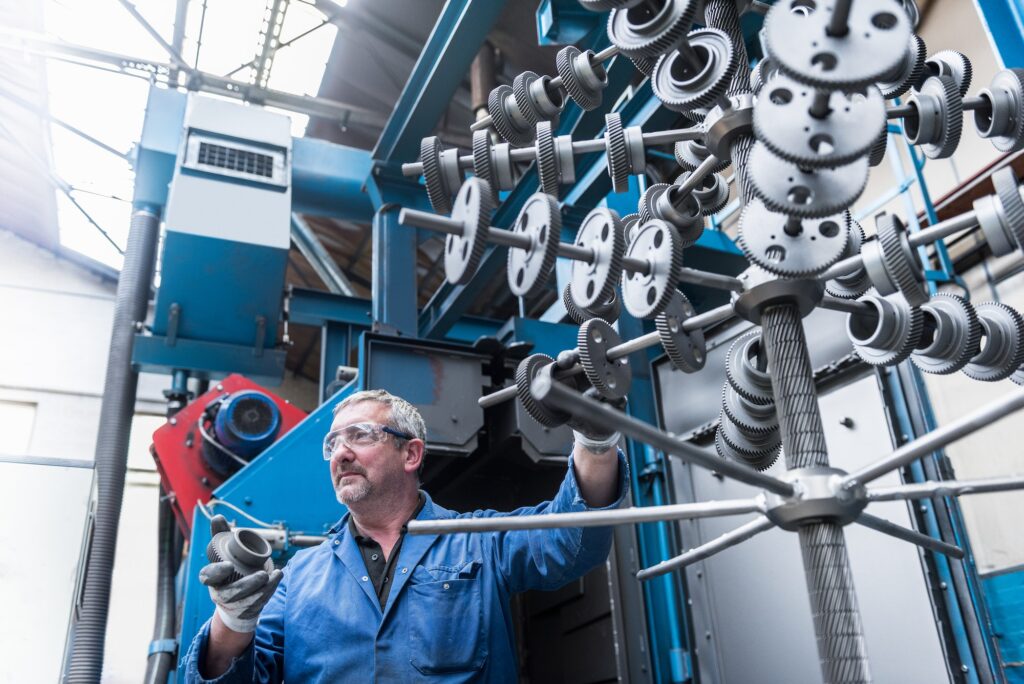
First, the iron casting is placed in a shot blasting machine for the first shot blasting process.
The blasting machine uses high speed rotating blades to throw abrasive particles at the surface of the iron casting, which will remove many impurities from the surface of the iron casting.
Next, the grinding process. This is done to remove any remaining burrs from the surface of the iron casting. The grinding process also gives the iron casting a smooth, polished surface.
Finally, a shot peening process is performed. This process uses high pressure air to blast the surface of the iron casting. This creates a smooth, glossy surface on the surface of the iron casting.
After the shot blasting process is completed, the rough product of the iron casting is finished.
7. Heat Treatment
As needed, we heat treat the iron casting to relieve stress and improve ductility. This process involves heating the metal to a high temperature and then cooling it rapidly.
First, we heat the metal in a furnace to austenitize it, which means that the carbon in the metal becomes austenitic.
Then, we quench, or rapidly cool it, usually in water or oil. This transforms the austenite into martensite, which is a very hard but brittle form of iron.
Finally, we temper the metal to relieve the stresses caused by quenching and to make it more ductile.
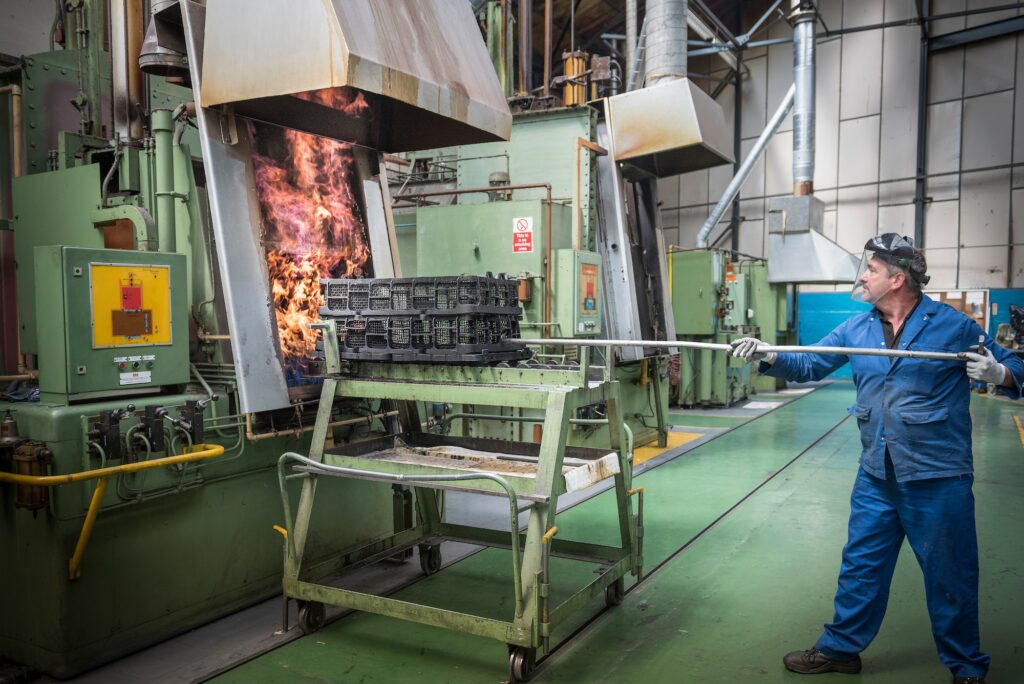
There are three main types of heat treatment: annealing, normalizing and quenching.
Annealing is a heating and cooling process.
Normalizing is the process of heating metal to a high temperature and then cooling it in air to relieve stresses and make it more ductile. Normalizing is a process in which metal is heated to high temperatures and then cooled in air.
Quenching is a process of rapidly cooling metal, usually in water or oil, to convert austenite to martensite.
8. Machining
We can machine iron castings to customer specifications using a CNC lathe, a process that gives the casting its final shape and dimensions.
The first step is to create a machining program. This tells the CNC lathe what dimensions the casting should be and how to cut it to those dimensions.
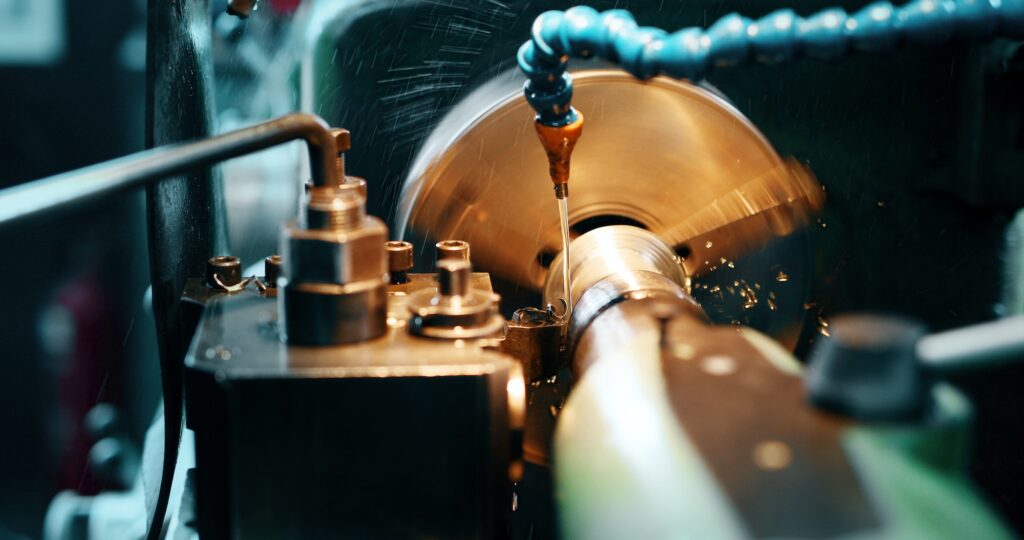
Once the program is created, the casting is placed on the lathe and cutting begins.
The cutting process can take some time, depending on the size and complexity of the casting. Once completed, the iron casting will be the exact size and shape specified in the machining program.
What also needs special attention is the quality control that must be done. This means that each iron casting must undergo a dimensional quality check to ensure that it meets the customer’s specifications.
9. Anti-rust Treatment
There is still a certain amount of time between the production of the finished iron casting and its delivery to the customer. As little as a few weeks, as much as a few months.
During this time, iron castings due to temperature, air humidity and other factors, causing rust is very common.
Therefore, it is important to give iron castings a good anti-rust treatment, which should not be ignored.
The most common antirust treatment methods are oil-based antirust agent, water-based antirust agent, vapor phase antirust agent, electrochemical method, organic coating, etc.
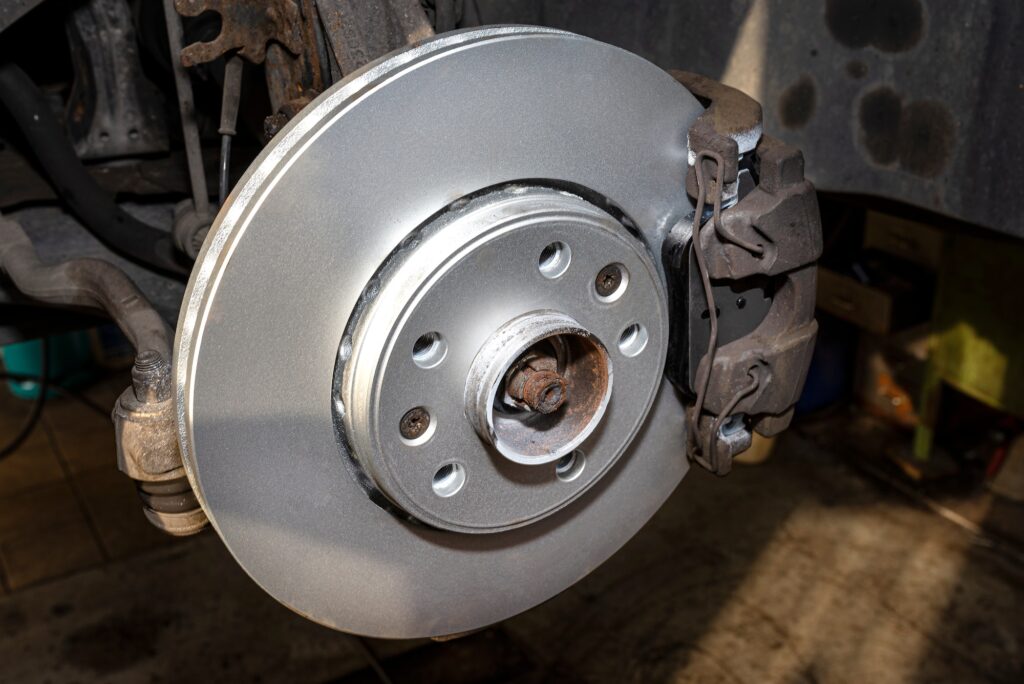
Oil-based antirust agent is an oil film applied on the surface of the casting, which has the function of isolating the oxygen in the air and preventing rusting.
Water-based rust inhibitor is a waterproof film applied to the surface of the casting, which also has the function of isolating the oxygen in the air and preventing rusting.
Vapor phase inhibitor is a method of applying the inhibitor in the form of vapor to the surface of the casting, which rapidly forms a dense and uniform film on the surface of the casting, thus inhibiting rusting.
Electrochemical methods involve applying an electric potential to the surface of the casting in an electrolyte solution, thereby forming a thin, dense oxide film on the surface of the casting, which prevents rusting.
Organic coating is to coat an organic film on the casting surface by spraying or dipping, which has a good rust prevention effect.
10. Packing Operation
The last procedure of making iron castings is packing.
The process of packing the iron casting into a suitable container before shipping. This usually involves placing the casting in a cardboard box or wooden crate and then sealing it.
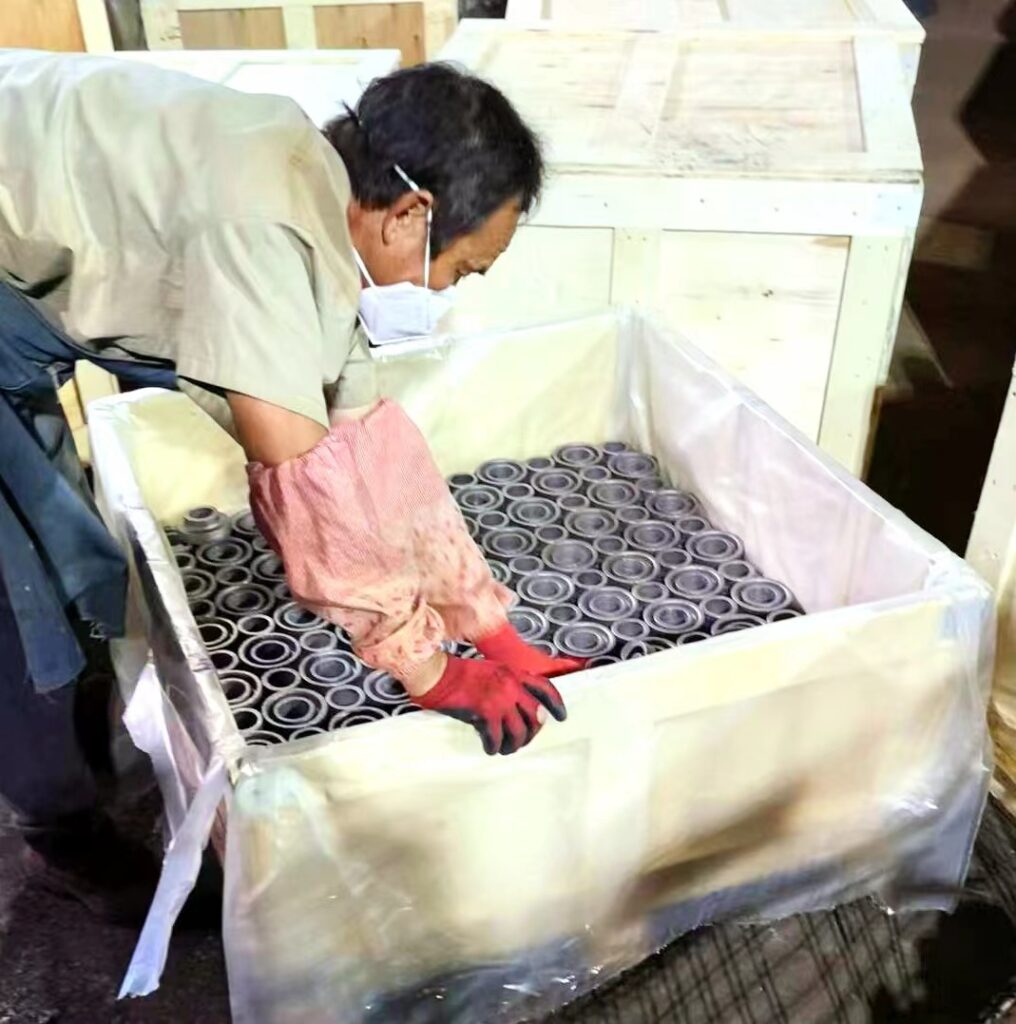
The type of container used depends on the size and weight of the iron casting, as well as the method of transport.
Smaller castings may be packed in bags or cartons. While larger ones may need to be packed in crates or on pallets.
It is important to note that crates for export packing must be used in China, and if crates of raw wood are used, they are sure to be fumigated. Once the iron casting is packed, it is ready for shipping.
Conclusion
The above is the whole process of making iron castings from preparation, designing the mold, making the mold, making the sand mold, pouring the iron, shot blasting and grinding, heat treatment, machining, rustproof treatment, to the final packaging.
Castimoo is a manufacturer specializing in the design and production of gray and ductile iron castings.
We have 30 years of experience in the industry. We hope this experience can help more customers who need iron castings to get more value and profit.

One Response